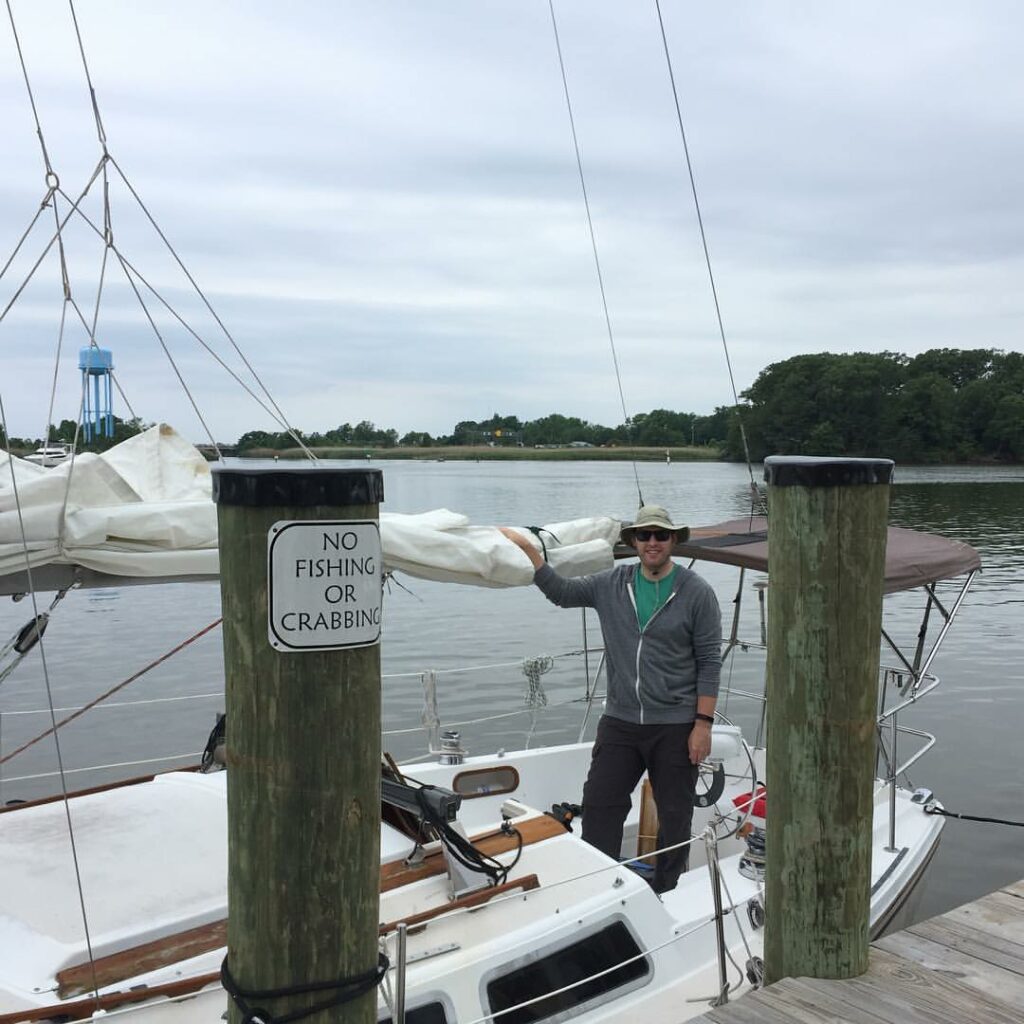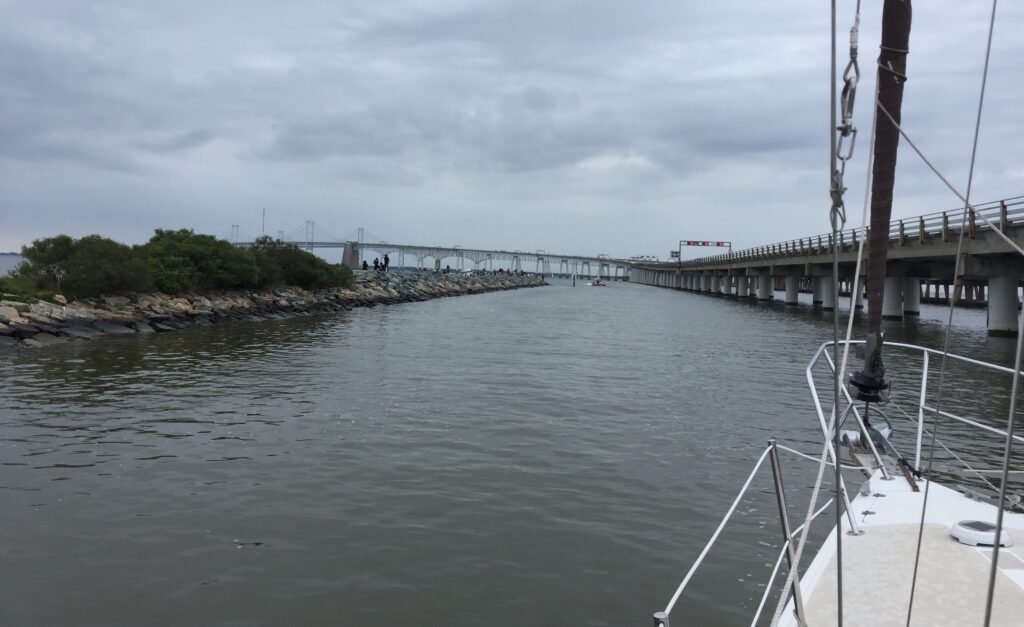We all know what they say about the best laid plans, right? Well, after over two weeks of unseasonable cold, rain, and gloom, the forecast finally called for a day without even the threat of rain. It looked like the best forecast we’ve seen so far since we started sailing our boat. We made plans to do our desperately needed first pump out followed by some casual sailing. The weather, however, had different plans.
Note: This post originally appeared on our sailing blog, The Bay and Beyond, which now redirects here.
When we got to the boat shortly before noon, the weather was still looking great. In fact, it was even sunnier than predicted and both Ellie and I hid in the shade of our bimini as we motored out of our home creek. Once we got out into the bay proper we turned north towards the Bay Bridge, under which we needed to sail in order to reach our destination for pumping out, Sandy Point State Park.
After about 45 minutes of motoring, we recognized our first mistake of the day: we were trying to motor north on the Chesapeake during the middle of an ebb tide. This meant that we had at least one knot of current moving against us. Combined with the northeast wind we were barely able to make 4 knots at cruising power, which typically moves us along at 5 and a half knots. At this point, we recognized our second mistake of the day: we hadn’t removed our mainsail cover earlier in the trip because we didn’t anticipate sailing until after we pumped out. Now, even though the wind direction was ideal to help give us a speed boost against the tide, the waves and chop of the open bay made it very difficult to do any work on the deck. We managed to get the sail cover and most of the sail ties off but it took so long that we were already approaching the bridge, so we abandoned the attempt to raise the sail.
Somewhat defeated, we crossed under the bridge and made a turn to port to put us on a course towards the narrow inlet into the Sandy Point basin. As we approached the inlet, our eyes turned to our depth sounder. The draft of our boat is about 4 feet 4 inches, and even though the controlling depth of the park’s inlet and basin is supposed to be 6 feet, we had heard rumors that in reality it was closer to 4 feet in some places. Very slowly we negotiated the inlet and found ourselves in the wide basin; so far, the depth had not fallen below 6 feet. We spotted the pump out station near the ship’s store and were relieved to find it unoccupied.
This would be our first public docking, and we were a bit nervous as we approached the dock a short distance away from the busy boat launch ramps. Ellie stood on the bow ready with a dockline and as we gingerly touched the pilings she hopped off and secured the bow. I gave it a short burst in reverse to bring the boat to a stop and handed the stern line up to Ellie; our first public docking was a resounding success! The pump out station was in great working order and it made quick work of our 17 gallon holding tank.

We were in high spirits after this series of successes, but as we prepared to leave the park something quite unexpected happened: we started to see and feel raindrops. As we made our way back out of the park’s inlet the few raindrops became a steady sprinkle, and we noted that the wind had changed directions.

Indeed, it soon became apparent that the weather forecast for the day was drastically incorrect. We turned under the Bay Bridge once more and when we emerged on the south side we ran head first into the now southerly wind pushing steady rain straight into our faces under the bimini. Ellie checked the latest weather radar images on her phone and found that we were about to run straight into a squall moving northeast over Annapolis. As the wind picked up I threw on my PFD and scurried to the deck to tie down our mainsail. A few minutes later with the sail ties secure I returned to the cockpit soaking wet.
For the next hour or so Ellie and I huddled under the bimini in an attempt to stay moderately dry as we motored home. Ellie took the helm and once again expertly pulled into our slip; it continued to rain steadily as we secured our lines and closed the boat up. In addition to the earlier mistakes, the day’s weather taught us one last lesson for the day: always periodically check the updated weather forecasts!
Even with the mistakes, however, the day was a resounding success. We made our first public docking and completed our first pump out, two very big checkboxes on our sailing journey. As always, we’ll learn from our mistakes and apply our experience to our future cruising adventures.
